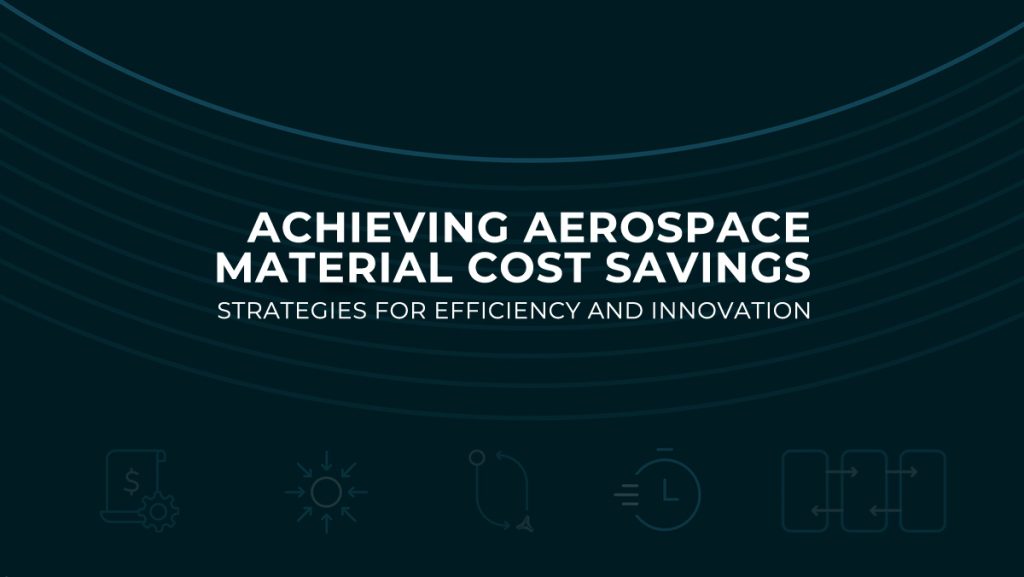The aerospace industry is known for its rigorous standards, cutting-edge technology, and stringent safety requirements. However, it also faces constant pressure to reduce costs while maintaining the highest levels of quality and performance. Material costs represent a significant portion of aerospace manufacturing expenses, making them a prime target for cost-saving initiatives. In this article, we explore strategies for achieving material cost savings in the aerospace industry through efficiency improvements, innovation, and strategic sourcing.
1. Material Selection and Optimization:
Selecting the right materials for aerospace applications is crucial for balancing performance, durability, and cost-effectiveness. Manufacturers must evaluate various factors, including mechanical properties, weight, corrosion resistance, and cost, to identify materials that meet performance requirements while minimizing costs.
-
- Lightweight Materials: Lightweight materials such as composites, aluminum alloys, and titanium offer significant weight savings compared to traditional materials like steel. By reducing the weight of aircraft components, manufacturers can achieve fuel savings, improve efficiency, and reduce operating costs over the aircraft’s lifecycle.
- Advanced Composites: Advanced composite materials, such as carbon fiber reinforced polymers (CFRP) and fiberglass composites, offer exceptional strength-to-weight ratios and design flexibility. Although composites may have higher upfront costs, their superior performance and durability can result in long-term cost savings through reduced maintenance, fuel consumption, and operational downtime.
2. Process Optimization and Manufacturing Efficiency:
Optimizing manufacturing processes and improving production efficiency are essential for reducing material waste, minimizing scrap, and lowering production costs in the aerospace industry. By streamlining workflows, leveraging automation, and implementing lean manufacturing principles, manufacturers can achieve significant cost savings while maintaining product quality and safety standards.
-
- Additive Manufacturing: Additive manufacturing, also known as 3D printing, offers the potential for significant cost savings in aerospace production. By building components layer by layer from digital designs, additive manufacturing reduces material waste, shortens lead times, and enables complex geometries that are difficult or impossible to achieve with traditional manufacturing methods.
- Supply Chain Optimization: Streamlining the aerospace supply chain and optimizing inventory management practices can help reduce material costs and minimize supply chain risks. Collaborating closely with suppliers, implementing just-in-time inventory systems, and leveraging digital technologies for supply chain visibility and demand forecasting can improve efficiency and reduce working capital requirements.
3. Strategic Sourcing and Supplier Collaboration:
Strategic sourcing and supplier collaboration play a crucial role in achieving material cost savings in the aerospace industry. By partnering with suppliers who offer high-quality materials at competitive prices, manufacturers can reduce procurement costs and ensure a reliable supply of materials to meet production demands.
-
- Long-Term Agreements: Establishing long-term agreements with key suppliers can provide stability and predictability in material pricing, allowing manufacturers to negotiate favorable terms and achieve cost savings through economies of scale.
- Value Engineering: Collaborating with suppliers to identify opportunities for value engineering and cost optimization can lead to innovative solutions that reduce material costs without compromising performance or safety. By reevaluating design specifications, material specifications, and manufacturing processes, manufacturers can identify areas for improvement and implement cost-saving initiatives.
4. Continuous Improvement and Innovation:
Embracing a culture of continuous improvement and fostering a spirit of innovation are essential for achieving sustainable material cost savings in the aerospace industry. By encouraging employees to identify inefficiencies, explore new technologies, and challenge the status quo, manufacturers can drive innovation and unlock new opportunities for cost reduction and competitive advantage.
-
- Cross-Functional Collaboration: Encourage cross-functional collaboration and knowledge sharing among engineering, procurement, and manufacturing teams to identify opportunities for cost savings and efficiency improvements throughout the product lifecycle.
- Research and Development: Invest in research and development initiatives to explore new materials, manufacturing processes, and technologies that offer potential cost savings and performance enhancements. By staying at the forefront of technological advancements, manufacturers can position themselves as industry leaders and drive innovation in aerospace materials and manufacturing.
In conclusion, achieving material cost savings in the aerospace industry requires a multifaceted approach that encompasses material selection and optimization, process optimization, strategic sourcing, and innovation. By leveraging lightweight materials, optimizing manufacturing processes, collaborating with suppliers, and fostering a culture of continuous improvement, aerospace manufacturers can reduce material costs, enhance efficiency, and maintain their competitive edge in a rapidly evolving industry landscape.
For more information, send us a message to sales@airlinemro.parts. We will be happy to assist you!
